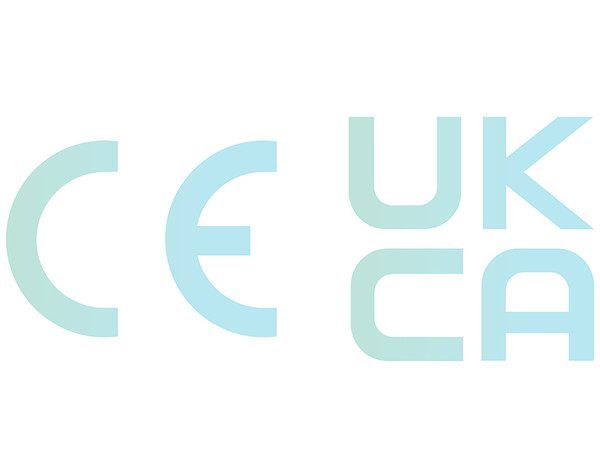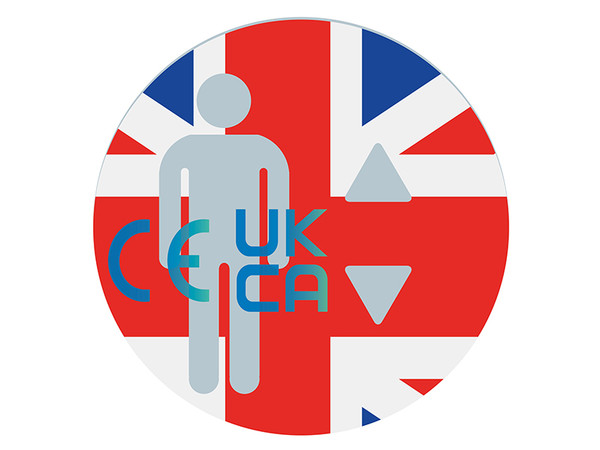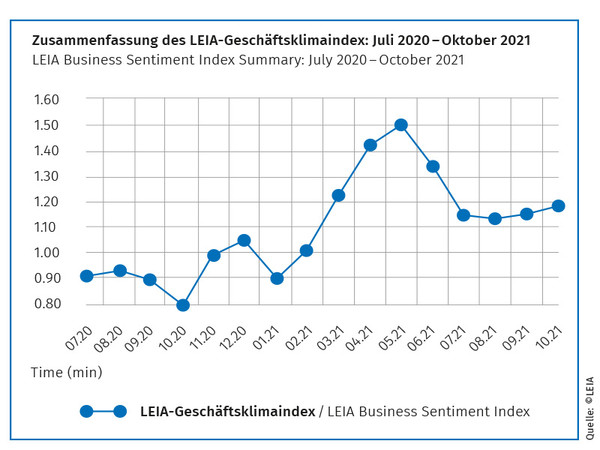Brexit: UKCA mark and implications
Following the pandemic and Brexit, Nick Mellor gives an overview of the UK lift and escalator industry and the new rules around UKCA marking.
He is Managing Director of LEIA (Lift and Escalator Industry Association), the UK trade association and advisory body for the lift and escalator industry.
The UK industry is recovering from the pandemic but also the immediate effects of Brexit – the UK’s departure from the European Union (EU). The UK actually left the EU on 31 January 2020 with a transition phase until 31 December 2020. While there are very many implications of Brexit still, this article focusses on the implications for the lift and escalator industry.
UKCA and conformity assessment
From 1 January 2021, UK Lifts Regulations and the Supply of Machinery (Safety) Regulations ("Machinery Regulations"), which were previously the UK implementations of the EU Lift Directive and EC Machinery Directive, were "de-coupled" from EU legislation and established as standalone UK regulations.
 Photo: © okapidesign
Photo: © okapidesignAs from 1 January 2021, the essential requirements of the UK Lifts Regulations and Machinery Regulations were identical to those of the EU Directives. The general conformity assessment procedures were equivalent to previously.
However, there were initially some important changes:
• Notified Bodies in the UK became "Approved Bodies". This means approvals from UK Approved Bodies are no longer recognised in the EU.
• UK regulations refer to "designated standards" to give a presumption of conformity to their essential requirements. As of 1 January 2021, the list of UK designated standards was identical to the list of EU harmonised standards. Since then, standards cited in the Official Journal (such as EN 81-20:2020, EN 81-50:2020, EN 81-72:2020, EN 81-73:2020) have been listed as designated standards.
• New conformity marking requirements (UKCA marking) were introduced to replace the CE-mark. CE-marked equipment may still be put onto the UK market until 31 December 2022. Much of this article looks at UKCA-marking requirements.
• To avoid a hard border between the Republic of Ireland and Northern Ireland (the only land border between EU and UK), under the Protocol on Ireland/Northern Ireland (also known as the Northern Ireland Protocol), Northern Ireland is formally outside the EU single market; but EU free movement of goods rules and EU Customs Union rules still apply. In Northern Ireland, CE-marked equipment will continue to be acceptable.
The rules are different between Northern Ireland and Great Britain (the UK excluding Northern Ireland). This article concentrates on the use of UKCA marking in Great Britain (GB) focusing on the marking and conformity assessment procedures for lifts, safety components for lifts, and machinery within our scope being placed onto the UK market.
Why does the UK need a separate conformity assessment mark?
The UK Government issued guidance in September 2020 setting out a new UK Conformity Assessment (UKCA) mark to replace the use of the CE mark. This consistent with having UK Conformity Assessment bodies which are no longer able to conformity assess against EU directives.
Since the UK regulations have been de-coupled from EU legislation, the possibility for UK requirements to diverge from EU requirements also requires a separate mark.
What is the risk of UK regulations diverging from EU Directives?
 Photo: © okapidesign
Photo: © okapidesignAt present, the technical requirements for lifts, safety components for lifts, and relevant machinery in the UK and EU are identical. LEIA knows of no plans to revise either the UK Lifts or Machinery Regulations.
However, the European Commission is working on new EU Machinery Regulation, and this is likely to include many important new essential health and safety requirements (EHSRs). We know that many of the concerns of the European lift industry might not be considered fully by the European Commission.
An early indication of the UK Government’s attitude to remaining aligned will be from its response to a new EU Machinery Directive/Regulation. Will the UK implement the EU legislation, modify or even add further requirements? LEIA’s position is that essential requirements of UK regulations should be aligned with EHSRs of EU Directives and believes that there is a good argument from product safety to remain aligned.
The UK Government held a product safety consultation earlier this year. LEIA made a submission including many comments also made on the revision of the Machinery Directive. When the UK Government publishes details of the consultation submissions and its response to the consultation, there will be a clearer view of the UK Government’s attitude toward alignment or divergence. It is clear that, having de-coupled UK regulations from EU legislation, divergence is possible.
More information: leia.co.uk
Relevant machinery not requiring the use of Notified Bodies or Approved Bodies: • Equipment of interest under the Machinery regulations includes escalators and moving walks, service lifts and goods only lifts, stairlifts, and vertical lifting appliance with a lifting height up to 3 m. These do not need the involvement of a Notified Body or Approved Body.
• The manufacturer (as defined in the regulations) takes responsibility for conformity assessment procedure. For equipment placed on the GB market until 31 December 2022, either the CE-mark or UKCA mark can be used and, until 31 December 2023, the UKCA mark can be on accompanying documentation. From 1 January 2023, only the UKCA mark may be used; the CE-mark will not be accepted. For equipment placed on the market in Northern Ireland, CE-marking will continue to be accepted.
• Lifting appliances with a lifting height of 3 m or greater (except where a designated standard is followed with internal check of manufacture) need the involvement of either an EU Notified Body (only until the end of 2022) or a UK Approved Body. An EU Notified Body may be used, and CE-mark used until the end of 2022. From 1 January 2023, a UK Approved Body must be used and then the UKCA mark used with the Approved Body’s 4-digit number. The UKCA mark may be on accompanying documentation until the end of 2023.
Lifts under the Lifts Regulations: • Lift installers using UK Approved Bodies for either Unit Verification or Full Quality Assurance plus design inspection for lifts should not need to take action for their conformity assessment procedures for lifts (but will need to take action on the conformity assessment procedures for safety components for lifts included - see below).
• Lifts designed and manufactured according to Full Quality Assurance system with design inspection approved by an EU Notified Body and model lifts designed and manufactured according to EU Type Examination issued by an EU Notified Body will need to have these approvals transferred to a UK Approved Body by 31 December 2022 if they are to be placed on the GB market from 1 January 2023.
• Lift installers will need to check the type of body used to approve each lift design (both type examination and design inspection) and each safety component for lifts. For installers buying in package lifts, they will need to check with their suppliers who in turn will need to check with their safety component manufacturers. If any use an EU Notified Body and not an Approved Body, then further action is required to enable lifts and safety components for lifts to continue to be placed on the GB market from 1 January 2023.
Safety components for lifts under the Lifts Regulations: • Safety components for lifts are defined in Schedule 3 of the Lifts Regulations as: landing door locks, safety gears, devices to prevent uncontrolled movement, overspeed governors, energy accumulating buffers (except linear types), energy dissipating buffers and electric safety devices (PESSRAL). Note: car door locks and machine brakes (except where these are stopping means for ascending car overspeed protection (ACOP) or unintended car movement protection (UCMP) are not listed as safety components.
• Safety components for lifts where an EU Notified Body has been used may continue to be placed onto the GB market with CE-marking until 31 December 2022. From 1 January 2023, only UKCA-marking will be accepted.
• Safety components for lifts where an Approved Body has been used will need to be UKCA-marked as above – either fixed or, until 31 December 2023, on accompanying documentation.
• EU Type Examinations of safety components for lifts carried out by Notified Bodies will need to be transferred to Approved Bodies by the end of 2022. If the Notified Body is not applying to become an Approved Body and approved by the end of 2022 then certification will be needed by an Approved Body.
• At present, there are only two UK Approved Bodies for various conformity assessment procedures for safety components for lifts: BSI Assurance UK and Lift Cert. Other EU-based bodies are understood to seeking to be approved as UK Approved Bodies, but they will need to be established in the UK and we understand that the approval process is likely to take several months.
With over 300,000 lifts and escalators in the UK, it’s estimated that the annual UK market is: • 7000 – 8000 new lifts
• 150 – 200 new escalators
• 1000 new "slow speed lifts" and lifting platforms
• 1700 homelifts (these are without enclosures as described in BS 6440)
• 25000 stairlifts.
With so many existing lifts in operation, maintenance and modernisation of existing equipment is also an important part of the UK industry.
 LEIA Business Sentiment Index summary: July 2020-October 2021. Photo: © LEIA
LEIA Business Sentiment Index summary: July 2020-October 2021. Photo: © LEIA
Market strength: Since the pandemic, LEIA has gathered a monthly business sentiment index from its members which is similar to the index published by VDMA the German association. It is no surprise to see a strong rebound in sentiment as the UK emerged from lockdown in early 2021 and is more reassuring to see steady improvement in recent months.
This strong sentiment is supported by sales of space at the LIFTEX 2022 exhibition taking place next year at ExCeL, London from 12-13 October 2022. This has remarkably already sold as much space than the entire LIFTEX 2019 event.
More information: liftexshow.com 





















Write a comment